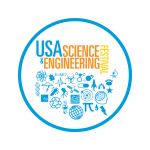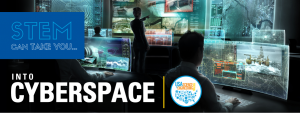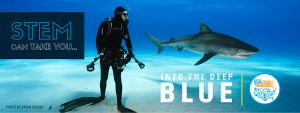
 By USA Science & Engineering Festival Nifty Fifty and X-STEM Speaker Dr. Jeff Goldstein
By USA Science & Engineering Festival Nifty Fifty and X-STEM Speaker Dr. Jeff Goldstein
Note: The launch of the CRS-5 is set for 6:20 am ET, January 6, on SpaceX-5 from Cape Canaveral Air Force Station, adjacent to Kennedy Space Center, Florida.
I thought it would be important to put up a blog post on the October 28, 2014, loss of Orb-3 and the SSEP Mission 6 Yankee Clipper payload of experiments, something that could capture the experience in that moment. I think it is an important story to share with the thousands of SSEP students across the nation and in Canada who are invested in this program. It’s a rare and powerful teachable moment on the realities of exploration on the human frontier. It is I think a life lesson.Here it is –
Please feel free to leave comments below if you’d like to share your experience.

Like the day before, we had come back to Arbuckle Neck Road, terminating just a mere 1.7 miles from Pad 0-A at the Mid-Atlantic Regional Spaceport, on Wallops Island, VA. Originally there were 41 SSEP student researchers and another 90 teachers, administrators, and family members here to see the launch of Yankee Clipper, the SSEP Mission 6 to ISS payload of 18 student experiments. The day before, on October 27, we got down to T-minus 12 minutes. Mission Control reported that a boat was in the restricted zone, and that ultimately scrubbed the launch. The one exciting moment was an event that did occur on schedule – which was quite a remarkable coincidence. The International Space Station, the second brightest object in the night sky next to the Moon, passed almost directly overhead about 5 minutes after the originally scheduled launch time. Surely the astronauts were looking down at the pad from 260 miles up, also waiting to see the launch.
Yesterday, there was disappointment, and some of the 130 folks could not stay overnight for today’s new launch attempt. But today, we still had over 100 representing SSEP – which was a significant portion of the few hundred now lining the swampy shore near Oyster Bay (see map). This was the place to be, 4.5 times closer than the NASA Wallops Flight Facility Visitor’s Center where another 500 had gathered. At Arbuckle you could find many of the engineers and Orbital folks proudly wearing their company’s shirt or jacket and whose baby – Orb-3 – was now on the pad. It was a 140-ft tall Antares rocket, and the Cygnus spacecraft at the top contained all the supplies and research equipment bound for the International Space Station, including SSEP Yankee Clipper.
Arbuckle Neck Rd. is a narrow country road winding through farmland in Accomack County, MD. For the second time, we all drove down that road, about an hour and a half before today’s scheduled 6:22 pm ET launch. For a couple of miles, it was a deserted stretch of road until you got to the end, where an already long line of cars was parking in the grass on either side of the roadway. Security and police had us all turn our cars around before parking, so we were already facing in the right direction for departure. It was an hour an a half before launch and you still needed to walk a quarter of a mile to the road’s end at the water’s edge. From here the rocket loomed large across the water.
It was a night launch, an incredibly spectacular event. The entire mid-Atlantic had the ability to see Orb-3 as it rocketed to orbit. There were visibility maps showing which States along the eastern seaboard would be able to see the rocket so many minutes after launch. At Arbuckle Neck it was another beautiful evening. The Sun was going down, and a crescent Moon hung low in the sky. The rocket was now awash in flood lights at the pad. It was a powerful sight. All the student researchers in attendance and watching on TV at home recognized that they were not just casual observers – their work was aboard the SS Deke Slaton, Orb-3’s Cygnus spacecraft. This was the real space program, and they were a part of it. I suspect many of the attendees didn’t truly get that dose of reality until they saw the rocket on the pad. This launch was to be a part of history at the dawn of the commercial space era, and all the SSEP student researchers at the launch site and tuned in on NASA TV were part of that adventure. That’s what we promised this next generation when we created SSEP.
We had a feeling that today the bird would fly, and the culmination of 9 months of work by these future scientists and engineers would be realized. For SSEP Mission 6, over 6,700 students in grades 5-15 had been engaged in microgravity experiment design – yes we even had a 4-year college and university community, and over 1,400 flight experiment proposals had been submitted by student teams. The formal review process had culled the proposals down to one flight experiment selected for each of the 18 communities – entire communities were invested in this Mission. Each of the selected student flight teams represented an ambassadorial corps for the hundreds of students that took part in the program back home in their community. And all those communities were tuned in, waiting for Orb-3 to clear the pad. Another 25 communities taking part in Mission 7 were also tuned in, recognizing that this was the shape of things to come for them in Spring 2015.
Cellular coverage at Arbuckle Neck road is terrible, and there’s no Wifi. The irony was palpable. Here we were at the launch of a rocket bound for Low Earth Orbit, and with smartphones and iPads in hand. But we could not listen in to Mission Control. Each launch, folks try to get Mission Control via NASA website, but to no avail. What’s a launch without the official play-by-play?
We thought we had a solution. This time we brought our portable PA system with the very heavy battery, carrying it a 1/4-mile to the water’s edge. NASA Wallops had given us one of the coveted phone numbers for direct dial-in to Mission Control. The wide bandwidth for tuning into Mission Control via website was dramatically narrowed to a single audio signal. We successfully dialed in, and connected the cell phone to the PA system. Mission Control filled the air. Orbital Sciences folks even came over to say thank you.
Blaring over the speaker, we heard flight controllers in Houston methodically going through their pre-launch checklist, and excitement was building. We were now beyond where we had gotten the day before, and down to the final minutes. Folks were now making final decisions as to where they wanted to stand to watch the launch, and whether they should focus attention on taking photos, or just watch and live in the moment. At less than a minute from launch I’m sure everyone was now focusing on getting into the spirit of the 10 second countdown, something engrained in anyone taking notice of the space age over the last nearly 60 years.
In unison we all counted down the final 10 seconds, and the engines ignited. It was an amazing sight. The engines blazed as the rocket began to rise, and a couple seconds later, the deafening sound reached us. You could look across the crowd and see pure euphoria. You could see the spirit of human exploration across generations.
In an instant, everything changed. There was a rumbling in the gut of those who knew what to expect at a launch. It seemed as if the rocket was no longer gaining altitude, and was in fact descending – something had gone very wrong. It appeared as if the engine flames were now searing everything on the ground. Then … Orb-3 just disappeared. The entire rocket was consumed in an immense fireball. It looked like a detonation, and we later learned that whomever was in charge of range safety had detonated the rocket once launch failure was apparent. From our vantage point, a massive wall of fire now stretched from the pad leftward.
All of us were trying hard to process what just happened, and we were all unaware that the blast wave was moving toward us at the speed of sound. A couple of seconds after we saw the fireball, we were hit with an intense pressure pulse knocking some of us off our feet. Many of the student researchers were in a state of shock, not knowing how to make sense of it. Some were understandably crying. We went from euphoria to despair in a matter of seconds. After the fireball, one adult came over to me and asked if the rocket had launched, trying to make sense of maybe a normal launch being associated with such a massive event – and surely the rocket did not just blow up! I’m sure that if you’ve never been at a launch you really don’t know what to expect for normal operations, and he was desperately trying to pull success out of failure in that moment.
The Security personnel on site were amazing, but that didn’t sink in until rational thought made its way back to consciousness. The rocket exploded and without missing a beat, officers got everyone moving very quickly, safely, and methodically back to our vehicles, which were already pointed in the direction for rapid egress. The entire area was cleared of hundreds of visitors in a matter of minutes. Someone should commend all security personnel on site whether they were from the County Sheriff, County Police, or NASA Security.
All the SSEP delegations quickly moved back to their vehicles and headed out, many driving hours through the night to get back home. There was no opportunity to gather the SSEP family to decompress, and to share the experience. I could only imagine how they felt. On social media and email we learned that reporters were waiting for them on arrival back home. This was national news, and they were part of the story.
In the hours that followed, we were concentrating on the students’ mindset through all this. We needed them to recognize that human exploration is not meant to be easy. That the explorer does not pack it in if the road seems hard. That failure happens – and what we do in the face of failure defines who we are. If you want to get an emotional sense of the experience, see my twitter feed on October 28-29: @doctorjeff
We did not precisely know how we would move forward with Mission 6 and Yankee Clipper, but we were not giving up. And the guidance came exceedingly fast. Less than an hour after the loss of Orb-3, Jeff Manber, Managing Director of our launch services provider NanoRacks, sent me a remarkably reassuring email that they were already working to re-fly the Yankee Clipper experiments on the next available flight to ISS, and asked whether the student flight teams were up for it. I told him that my expectation was that everyone to a team was going to re-fly on Yankee Clipper II. We had enormous pride and confidence in these student flight teams. In that moment of failure, we were sure that they would reaffirm their commitment to research on the frontier. That’s what professional microgravity researchers would do, and these remarkable students had delivered on every requirement to date for real spaceflight operations. They had been stepping to the plate as professional researchers all along – and they surely would again. What had happened demonstrated that space exploration is hard, really hard. So what.
I personally did not get back to the DC area until 3 am after attending the very somber media briefing at NASA Wallops on the loss of Orb-3. Our hearts went out to Orbital Sciences, NASA, and everyone that had payload on the vehicle. Yet one thing that came across loud and clear was that the NASA and Orbital Sciences senior leadership providing the briefing were certainly not giving up. They all recognized that failure happens, and they were now methodically activating the protocols for an accident investigation, which would point the way back to Orbital Sciences flights out of Wallops to ISS.
I asked Jeff Manber if he could provide a sense of his experience and what was happening behind the scenes for him immediately after the loss of Orb-3.
From Jeff Manber, Managing Director, NanoRacks –
My five year old son and I were watching the launch live on the television. At the moment of the explosion and for the first few moments afterwards I was explaining to him what he had just seen on the screen. After that, my thoughts turned to my team on site and the customers. I knew all were safe from the texts. A short time later a senior NASA official from JSC reached out asking if we needed help to account for all the NanoRacks folks and our customers; i.e., to make sure they were all safe. That was such a nice gesture.
We had an emergency call for top management within about 30 minutes, assessing the situation. About an hour later I wrote a note to the NASA Space Station program folks, telling them that our first thought and concerns from a business view was how soon could we get a re-flight. Would the wait be six months or a year to squeeze us on a SpaceX vehicle or Russian Progress? That night a NASA Space Station program official called me and said they were already discussing how to clear the manifest to make way for NanoRacks’ customers.
The next morning I was on a very early plane to Houston, landing about 8:00 in the morning. My phone rang and it was Mr. Mike Suffridini, the head of the Space Station program, calling to see if our needs were being met by the NASA team. What a wonderful gesture. Mike was obviously quite busy but he took about 20 minutes to discuss his early thoughts on manifesting and making sure we were fine with that.
Over the next few days I spoke with Richard Dalbello from the White House Office of Science Technology and Policy (OSTP) and others in the administration and NASA, all assuring that the commercial needs of the NanoRacks’ customers were being met. NASA moved non-essential cargo off of SpaceX-5, launching soon, and SpaceX-6.
I have to say the response from NASA and the science officials from the administration has been wonderful and shows all of us just how robust is the ISS program.
Right after the accident, Ken Shields at the Center for the Advancement of Science in Space (CASIS), a national partner on SSEP, sent me an email asking if everyone was ok. That evening, CASIS President and former astronaut Greg Johnson sent me the following –
Dear Jeff –
We are deeply saddened by the incident tonight and its impact on NASA, Orbital and our wonderful partners. Tonight’s incident is a stark reminder that there is nothing routine about launching into space. We are grateful that no one was injured at the launch pad. The entire CASIS family’s thoughts are with you and the many students whose dreams were impacted. Our hope is that this event does not diminish the spark in their hearts to look upward for inspiration, learning and discovery.
Space is our future and we will not be deterred from engaging the brightest minds in America and throughout the world to continue to make the most of the opportunities that space research and education have to offer us, and to improve life on Earth.
I want to thank you for your continued partnership and support and please know that our thoughts are with you at this difficult time.
Sincerely,
Greg Johnson
CASIS President & Executive Director
RE-FLIGHT OPERATIONS – Yankee Clipper II
On November 5, 2014, a week after the loss of Orb-3, NanoRacks officially informed us that we needed to rapidly assess if M6 flight teams were not only up for a re-flight, but if they could rapidly reconstitute their experiments and get them to Johnson Space Center for payload integration by November 21 – which would require than an entirely new experiment payload be in Houston less than 1 month after the loss of Orb-3. NASA had provided re-mainfest of the new Yankee Clipper II payload on Space-X 5, launching from Cape Canveral Air Force Station in December – that’s December 2014!
What a space program. It is such an honor to be part of this community. Nobody wanted to let these remarkable student researchers down, and what was a seemingly insurmountable path forward to a rapid re-launch was cleared by NASA and NanoRacks. Even the White House was involved. NanoRacks in fact needed to rapidly fabricate new mini-labs and ship them to all the communities.
It should also be pointed out that the Canadian Government was following along with SSEP. They knew that one of the flight experiments was from Kamloops/Thompson, British Columbia. The Canadian Space Agency was asked by their Government to contact me and assess if there was any potential to re-fly, or if this loss understandably brought SSEP Mission 6 to an end. That’s when I told him we were re-flying on SpaceX-5 in a month. There was silence on the other end. The connection wasn’t lost, he just did not believe he heard me right. Folks in the business understand the long lead times for manifesting payload on a spacecraft.
WE GO FORTH
Based on an enormity of communication, I think I can speak for all the administrators, teachers, and student researchers and say there is now a renewed sense of optimism and euphoria across the Mission 6 communities. 17 of the 18 flight teams are re-flying on Yankee Clipper II, and all experiments arrived in Houston on time. Way to go M6! (The 18th flight team will be re-flying their experiment with the Mission 7Odyssey payload in Spring 2015 given their research advisors at NASA suggested swapping a component, which required a new Flight Safety Review.)
You don’t give up. You get your head back in the game. This is how it’s done in the real world. What message would we send if we say that failure is insurmountable? That is not what SSEP is about, because that is not what exploration on the frontier is all about. You go forth, you push forward. In fact, that’s more than a lesson in STEM research, it’s a lesson for life.
We will indeed get the science from these young researcher’s to the International Space Station. At this writing we are now at T-minus 7 days, 22 hour, 7 minutes from the launch of SpaceX-5 and Yankee Clipper II, 2:31 pm EST, December 16, 2014,
real spaceflight all the time
– Dr. Jeff Goldstein
Center DIrector, National Center for Earth and Space Science Education
Institute Director, Arthur C. Clarke Institute for Space Education
Remember, you’re invited to leave a comment below if you wish.
The Student Spaceflight Experiments Program (SSEP) is a program of the National Center for Earth and Space Science Education (NCESSE) in the U.S., and the Arthur C. Clarke Institute for Space Education internationally. It is enabled through a strategic partnership with NanoRacks LLC, working with NASA under a Space Act Agreement as part of the utilization of the International Space Station as a National Laboratory. SSEP is the first pre-college STEM education program that is both a U.S. national initiative and implemented as an on-orbit commercial space venture.
The Smithsonian National Air and Space Museum, Center for the Advancement of Science in Space (CASIS), and Subaru of America, Inc., are National Partners on the Student Spaceflight Experiments Program.


































